Hands-on with Apple’s new CarPlay Ultra infotainment system
The next generation of CarPlay is a welcome upgrade, but some concerns remain
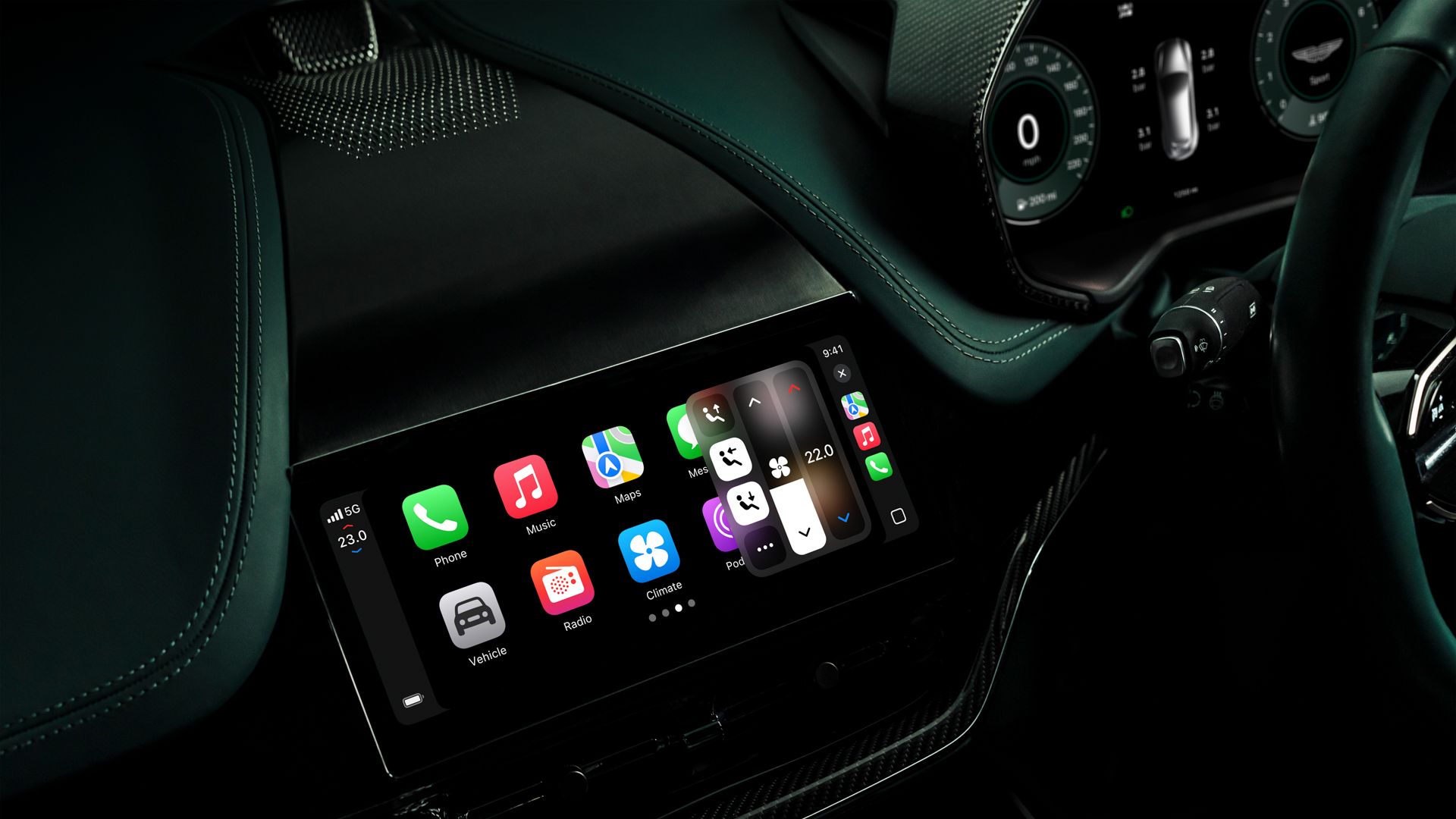

Three years on from Apple announcing a new generation of CarPlay, the new iPhone-powered car infotainment system is finally here.
At least, it is for drivers of brand-new Aston Martins. For now, only the British supercar maker’s new DB12, DBX, Vantage and Vanquish have access to CarPlay Ultra – but we’ve been reassured, many more cars from other brands will join the party soon.
I was invited to try out CarPlay Ultra in an Aston Martin DBX707, and from the moment you open the door and step inside, it’s clear this is a significant upgrade on what’s gone before. Since the car was already paired with an iPhone, CarPlay Ultra booted instantly to life. From the second the car is turned on, CarPlay is running on both the central touchscreen and the driver display. There’s not even a hint that the car uses any other software – and this is the experience CarPlay Ultra users can expect, whether they connect their iPhone wirelessly, as was the case for my demo, or with a cable.
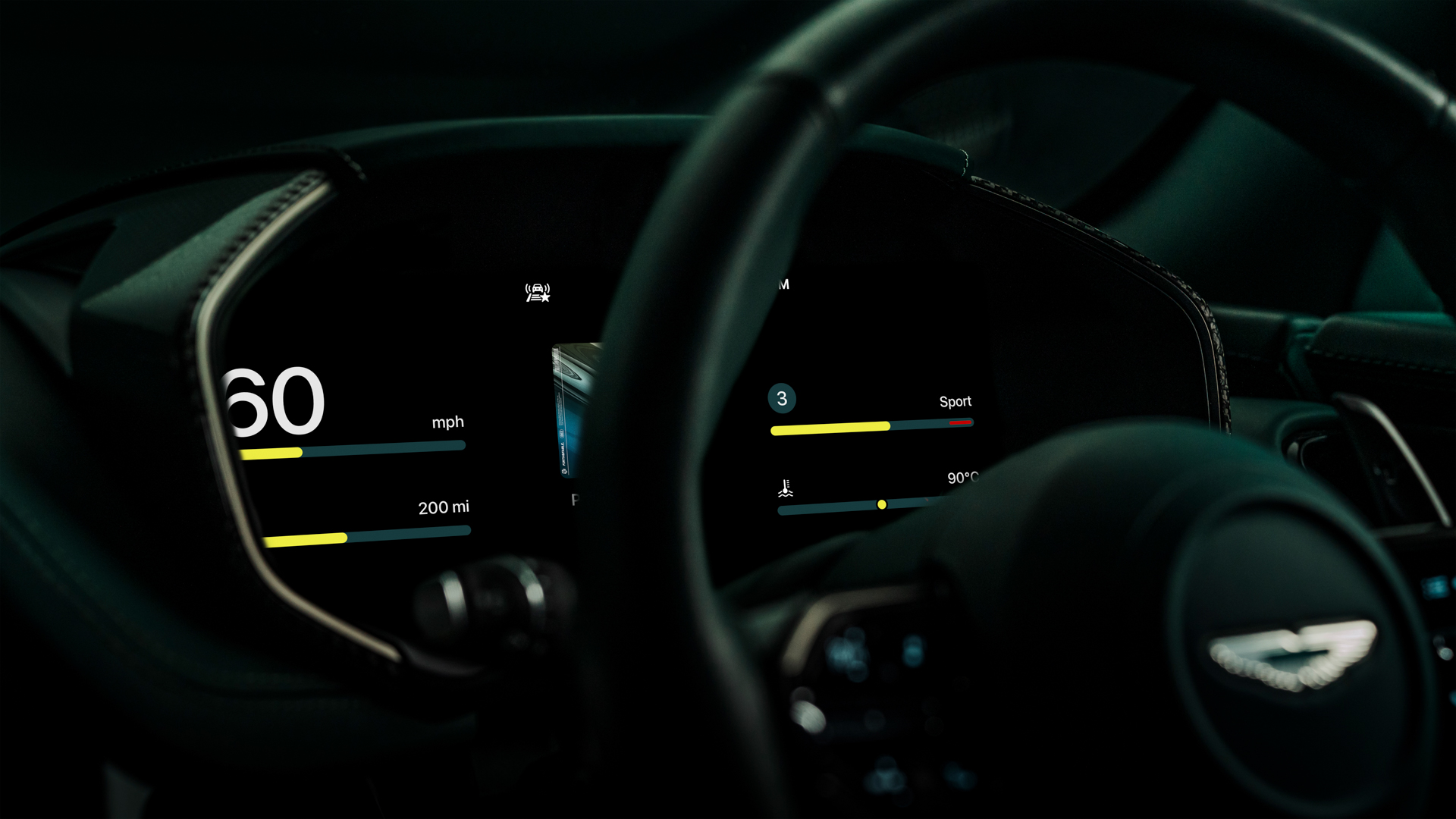
Aston Martin had already paired the phone to the car. But even if it hadn’t, I’m told the initial setup process is quick and painless. Just connect your iPhone in the usual way, then wait for it to download a set of imagery for that specific car. In my case, this means Aston Martin-designed dials and graphics that match the DBX707 I’m sitting in.
There are three key points to discuss. The first is how CarPlay Ultra now brings climate and media control settings to its own user interface. Drivers no longer have to exit CarPlay to change the radio station or adjust the cabin temperature, since buttons and sliders for all that are now inside CarPlay. Cabin temperature appears permanently on the touchscreen, so it’s just a case of tapping the temperature to bring up the controls, then tapping on the up or down arrows to adjust both temperature and fan speed.
Or, for more granular control, there’s a new Climate app on the CarPlay home screen. Tapping that fills the display with more climate options.
In Aston Martins, that includes a screen with shortcuts to climate presets like ‘Warm My Feet’, and here’s where we get to the second key feature of CarPlay Ultra: the ability to show vehicle-specific menus within CarPlay itself.
Get all the latest news, reviews, deals and buying guides on gorgeous tech, home and active products from the T3 experts
Those climate presets are made by Aston Martin and unique to its cars, yet they appear in CarPlay using Apple’s font and button design.
To do this, Apple is using a technique it calls punch-through. This is also employed to show things like the reversing camera, ambient light settings and engine telemetry data – the sort of menu item Apple hasn’t designed itself – within CarPlay. It’s a clever approach that means each car retains its own unique features, but allows them to appear within Apple’s user interface. For the driver, that means never having to leave the CarPlay environment, no matter which vehicle function they want to access or adjust.
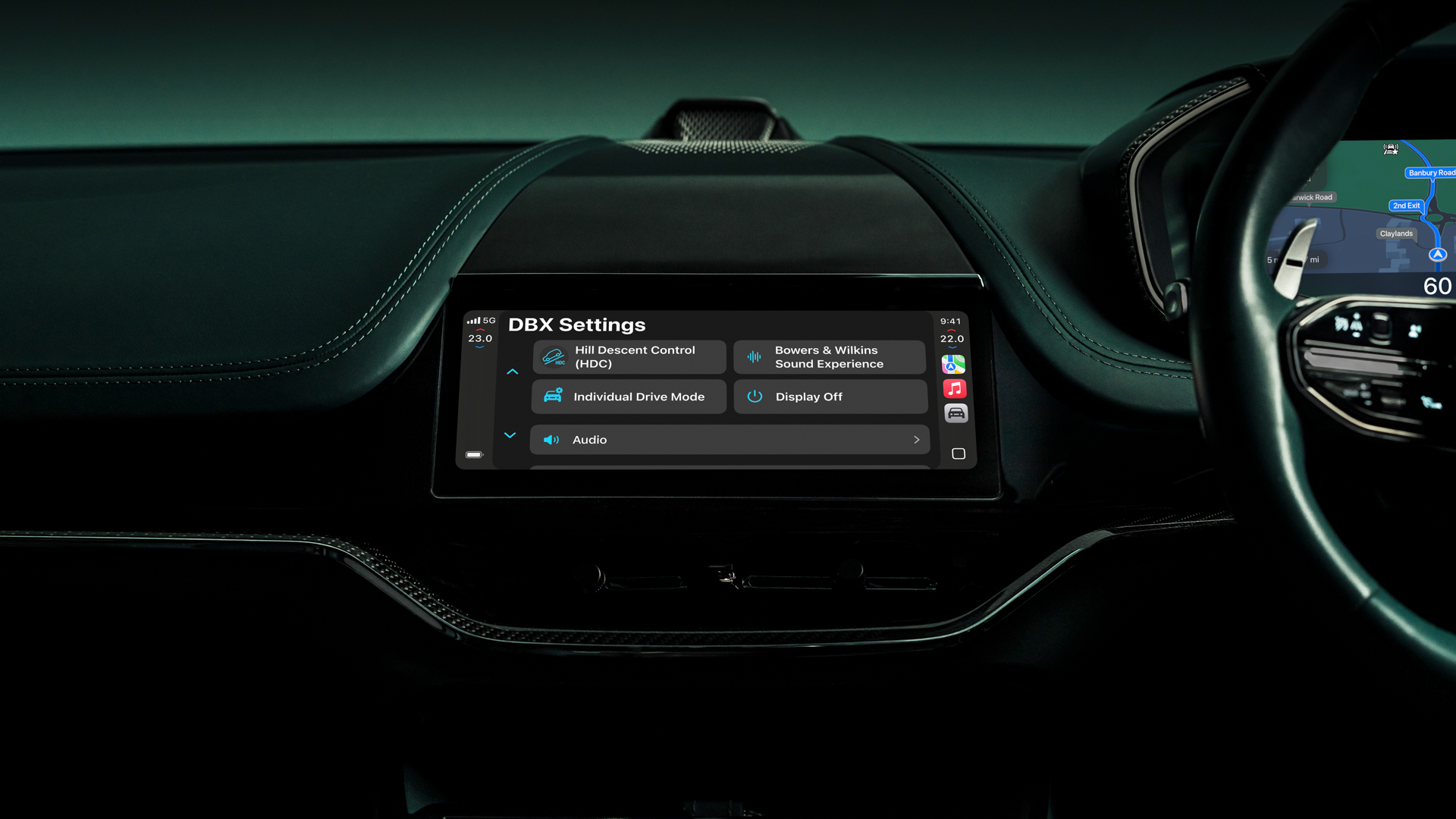
The third key function of CarPlay Ultra is how, for the first time, Apple’s user interface now appears on the driver display.
At long last, directions from Apple Maps (and Waze, but not Google Maps, at least for now) appear behind the steering wheel. Furthermore, you can configure CarPlay Ultra so that, when your passenger uses the touchscreen to hijack your road trip playlist, the map on the driver display automatically switches from a view of the entire journey to a view of your next navigation instruction.
By default, you’d barely know CarPlay Ultra was running on the driver screen. The Aston Martin I drove displayed a set of Aston-branded graphics, including a pair of dials for speed and engine revs, a gear indicator, fuel gauge and odometer, plus info for engine and external temperatures, drive mode, and all of the usual car icons you’d expect for the status of your lights and driver assistance systems.
All very normal. But, with the swipe of a touchpad on the steering wheel, everything changes. Swiping up or down scrolls through different functions for the centre of the driver display. These include a screen for journey data (distance, time, average speed, consumption, etc), one showing whatever media is playing, and one for navigation.
Swipe left or right, and the entire driver display changes. There are four distinct layouts in this car; some designed by Aston Martin and some designed by Apple. The former include the AM-branded dials, while the latter completely change the interface, turning the instrument cluster of a supercar into the readouts of a computer. One even replaces traditional circular dials with horizontal, multicoloured progress bars for speed, revs and fuel.
Purists will say this strips the Aston Martin of its identity, but in reality it’s just giving drivers more choice. You can have traditional dials if you like, or you can opt for something entirely new. Regardless of your preference, the centre of the screen can still be configured to show navigation, media or journey info. So it’s not a case of ever being forced to use Apple’s graphics to unlock the most functionality. Apple Maps or Apple Music (or the car’s own radio system) all sit neatly alongside any of the dial options.
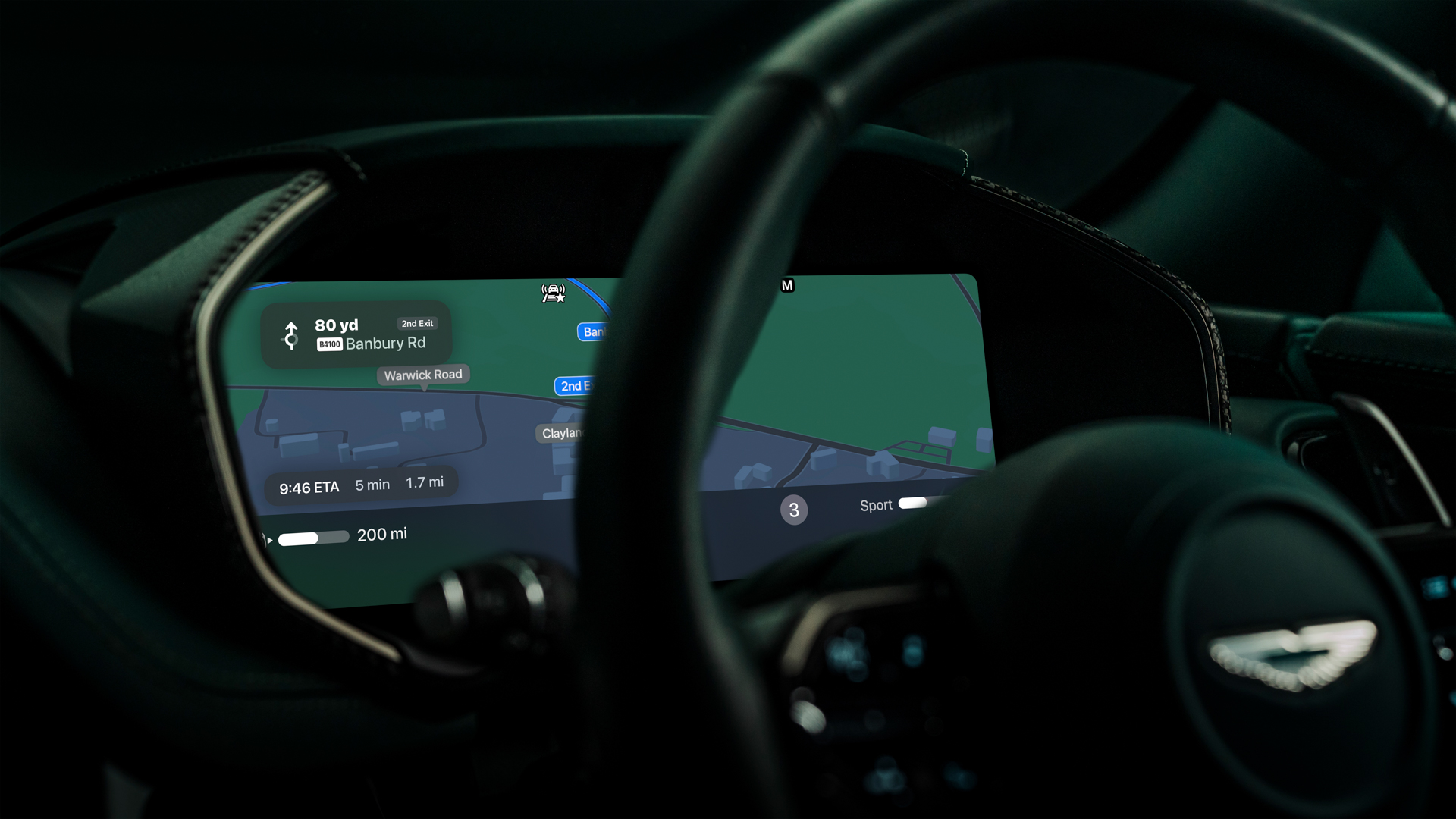
What’s CarPlay Ultra like to live with?
I only had about an hour with the car, but in that time I tried out all of the driver display interfaces and had a good look through the new Climate and Radio apps. In short, it’s a strong upgrade that welcomes the most commonly-used vehicle features, like the radio and temperature control, into the CarPlay environment.
But an Aston Martin probably isn’t the best car to demonstrate the new system. This is because today’s Astons all have physical switchgear for their climate control and drive modes, so it’s still quicker and easier to reach for those, than to tap at the touchscreen. I found myself instinctively rotating the drive selector, pressing the exhaust and suspension buttons, and scrolling on the temperature and fan speed rollers in the centre console, instead of using CarPlay.
However, that will all change when CarPlay Ultra lands on cars lacking such switchgear. For cars that put everything on the touchscreen, CarPlay Ultra should make it much quicker, easier and safer to change the cabin temperature or switch radio station, since those functions are now just a couple of taps away, instead of hidden in the car’s own operating system.
Also new is how the touchscreen displays StandBy widgets, like those that appear on your iPhone when it’s on a MagSafe charger and rotated to landscape. CarPlay Ultra shows two widgets side-by-side, including various clocks, calendars and weather forecasts, plus one for controlling HomeKit devices. The latter could be useful for turning on driveway lights or controlling a compatible garage door opener.
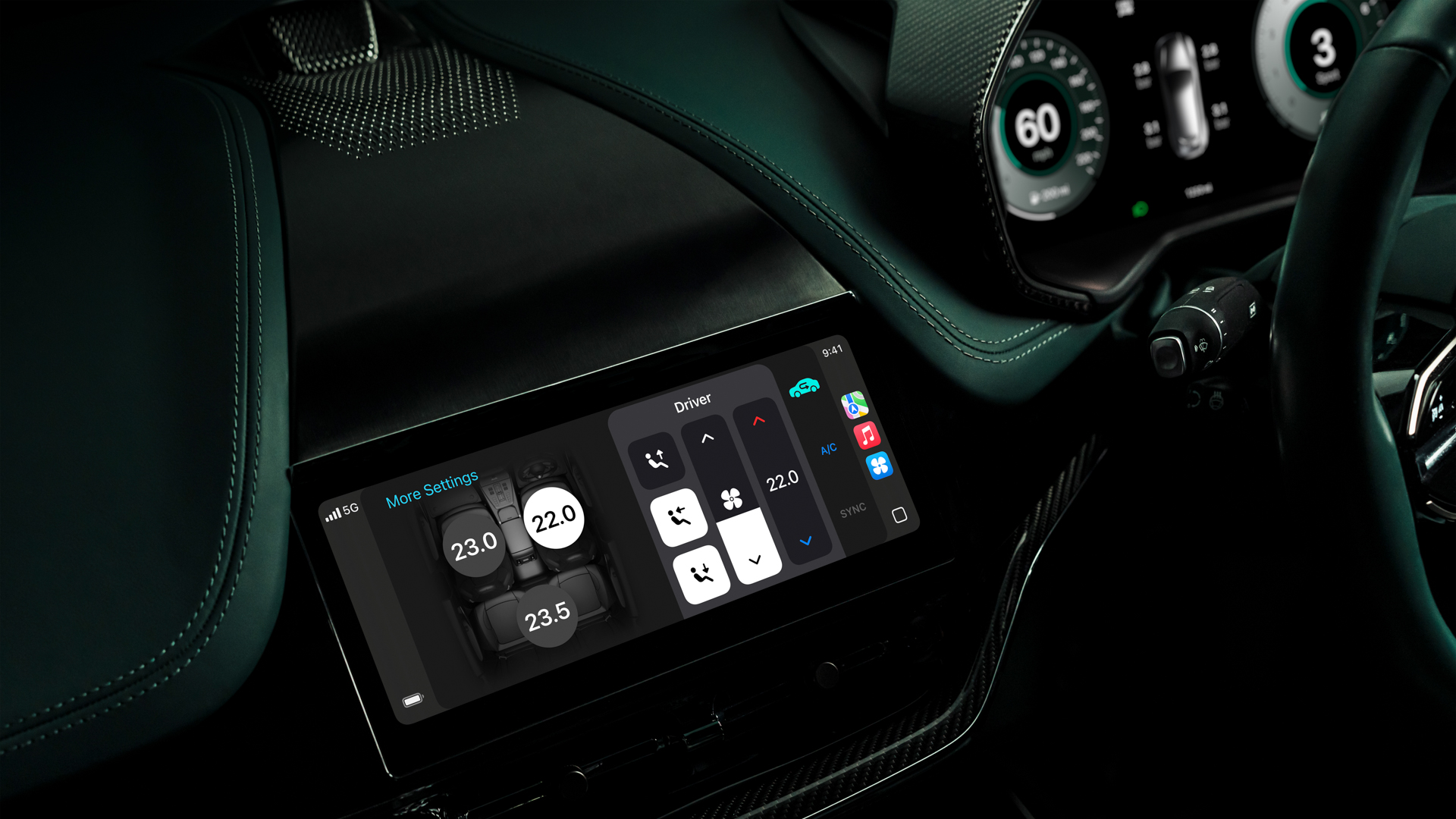
Same old Siri
As well as the touchscreen and physical switchgear, drivers can use Siri to interact with CarPlay Ultra. Apple’s voice assistant has been upgraded to work with the car’s climate and radio functions, as well as more advanced, vehicle-specific features, like sound system configurations and performance settings. However, for now at least, Siri still falls well short of what’s expected from artificial intelligence in 2025.
I opened Apple Maps in CarPlay and asked Siri for directions back to Aston Martin’s headquarters. Siri understood, but replied: “Sorry, I can’t show you the results while you’re in the car.” This was disappointing, to say the least, but thankfully it only took a moment to type in the address manually and I was on my way.
Siri understands requests to increase or decrease the cabin temperature, but can’t yet manage natural language like “it’s too warm in here”. Tellingly, there’s no mention of Apple Intelligence in relation to CarPlay Ultra, and I get the feeling Apple would rather you prioritise the car’s touchscreen and physical controls over its voice assistant.
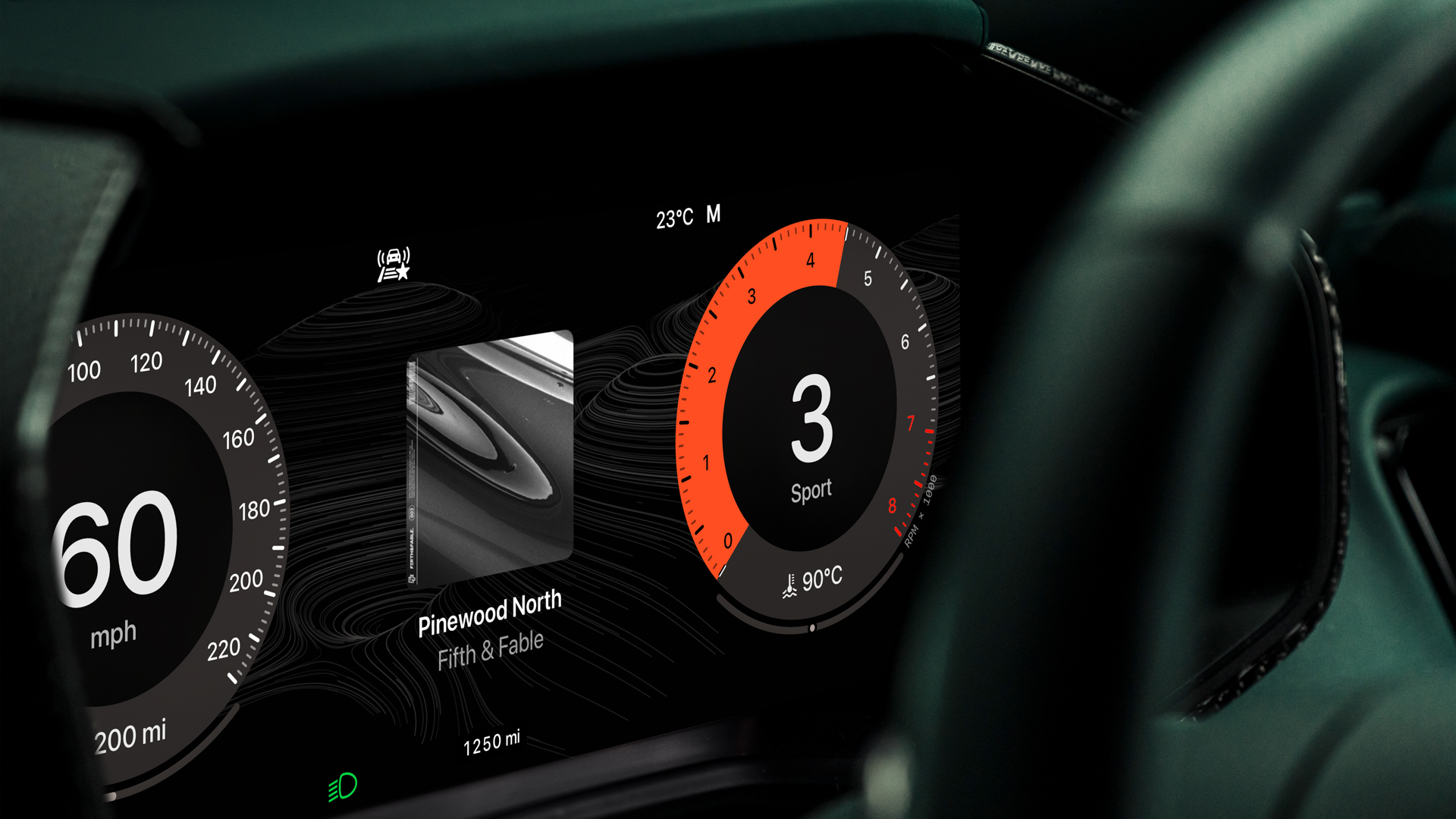
When can I get CarPlay Ultra?
Not yet, unless you own a new Aston Martin. And even then, if you already own a DB12 (or newer) you’ll have to visit a dealership to have CarPlay Ultra installed, since it’s such a hefty software upgrade. Aston Martins in production now will come with CarPlay Ultra fitted as standard.
The roll-out has already begun in the US and Canada, and will expand globally in the next 12 months. Other manufacturers working on CarPlay Ultra include Ford, Kia, Hyundai, Genesis, Renault, Porsche and Volvo, but launch dates and vehicle compatibility weren’t known at the time of writing. In short, it looks like it’ll be a slow rollout by Apple standards.
Thankfully, you won’t need a brand-new iPhone to make the Ultra upgrade. Apple says the system works on iPhone 12 or later running iOS 18.4 or later.
Alistair is a freelance automotive and technology journalist. He has bylines on esteemed sites such as the BBC, Forbes, TechRadar, and of best of all, T3, where he covers topics ranging from classic cars and men's lifestyle, to smart home technology, phones, electric cars, autonomy, Swiss watches, and much more besides. He is an experienced journalist, writing news, features, interviews and product reviews. If that didn't make him busy enough, he is also the co-host of the AutoChat podcast.
You must confirm your public display name before commenting
Please logout and then login again, you will then be prompted to enter your display name.
